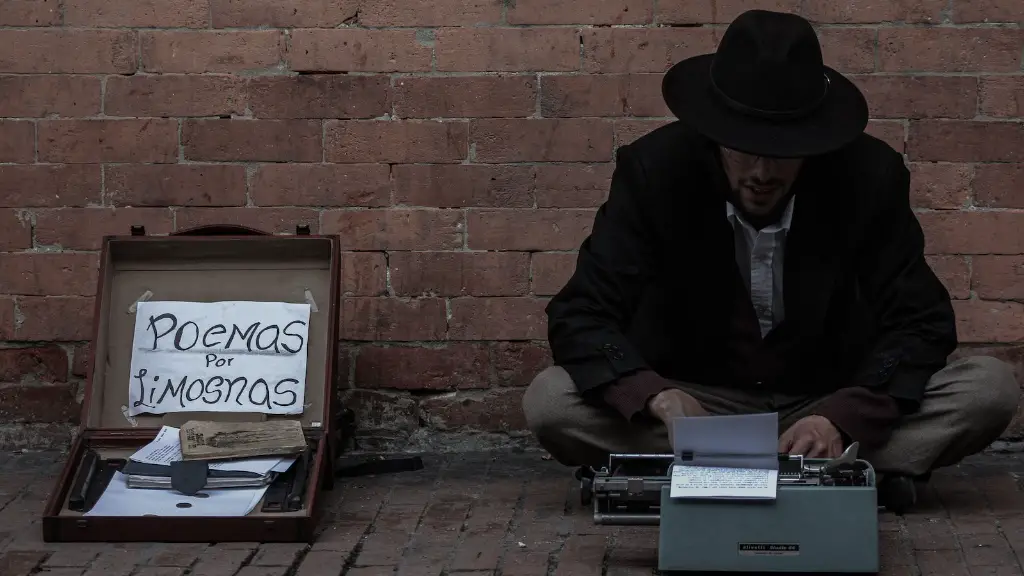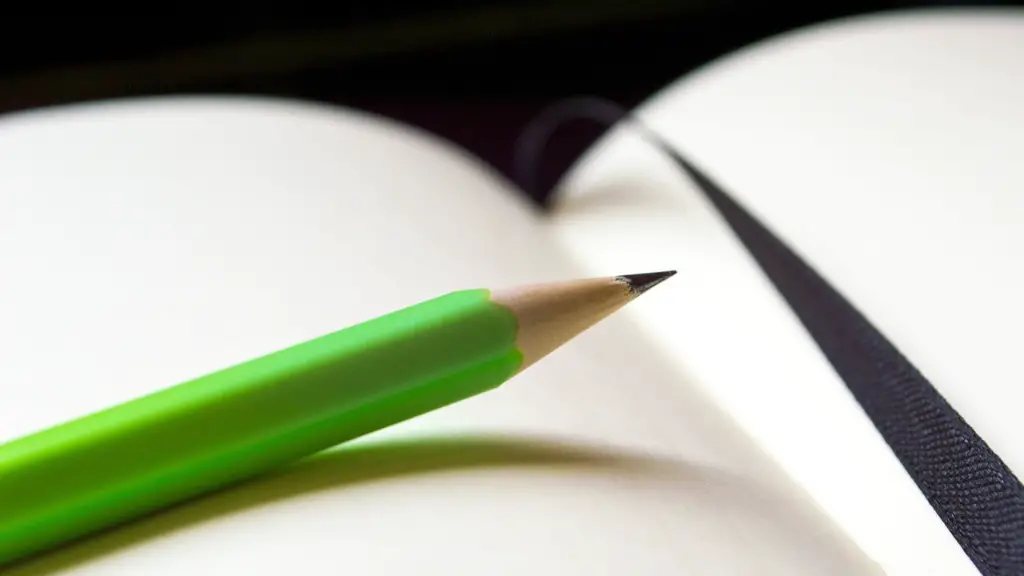Volta is a term used to describe the shift in theme, perspective, or tone in poetry. It originated from the Italian poet and playwright, Lodovico Ariosto, and has been a concept in literature since the 16th century. In formal poetry, a volta is usually marked by punctuation, such as a semi-colon or colon, or by a change of rhyme scheme. It can also be marked by the repetition of a key word at the beginning of the next line of verse. The volta signals a point in the poem when the focus or direction changes and can conjure an emotional shift in the reader according to the words that follow.
A volta does not always indicate a complete change in the poem’s subject, though it might. It could show a contrast between the two parts, or an elaboration on what has come before, such as a twist in the storyline or an answer to a question that has been posed. For example, William Wordsworth’s poem I Wandered Lonely as a Cloud includes a volta in the fourth stanza when the mood subtly shifts from a feeling of loneliness to a feeling of joy.
Understanding a volta can help readers appreciate the complexity of poetry. It also helps poets create and craft a piece that is true to the emotions and thoughts of the work. In poetry, and even in prose, it is important to not only convey ideas, but to also craft a piece that can impact a reader on an emotional and intellectual level. The volta provides a way for readers to make a connection to the poem through an experience that is more substantial than simply reading words.
Experts suggest that poets use volta as a way to create a tension and excitement in their work. It can help invigorate the poem and provide a cliffhanger that captivates readers. It can allow the poet to explore and develop different themes or emotions within the same piece. This kind of structure can also help support the overall theme of the poem and the poem’s narrative flow by providing contrast between sections.
Volta is an important concept for anyone studying poetry. It is important for readers to look for the volta in order to understand how the poem progresses and to appreciate the theme, narrative, and emotional power of the work. It can also provide insight into a poem’s structure and how the writer intended the poem to be interpreted.
The Role of Stanzas
The volta doesn’t have to occur at the end of a stanza, but this is a common occurrence. Stanzas break a poem up into sections and allow the poet to focus on the various parts that make up the poem. Each stanza may contain one idea or theme, and the volta can be used to move from one idea to another. By switching from one stanza to another, the poet can introduce tension or contrast that readers can find intriguing and memorable.
When a volta does occur at the end of a stanza, it often creates a “downbeat” that serves as a transition point for the next stanza. This downbeat does not have to mark a complete change in the poem’s meaning, but instead can be used to emphasize a point made by the previous stanza or to set up a theme for the next.
Stanzas can also be used to obscure the volta and create a mystery that forces the reader to pay close attention to the language and structure of the poem. By doing this, the poet can mask the true meaning of the poem, and this can add a layer of complexity and interest to a work of literature.
Volta in Different Forms of Poetry
Volta is used in many different types of poetry and literary forms. In odes, it is used to reflect a speaker’s appreciation of an object or occurrence, while in sonnets it can indicate a change of mood or viewpoint. In free-verse poetry, a volta can also be used for contrast between two parts of the same poem.
In some cases, a volta can be used to create a bridge between two sections of rhyming or rhythmic poetry. By introducing the volta before the rhyme or rhythm shifts, the poet can create a smoother transition from one section to the next.
Volta can also be used to provide contrast between sections of prose. It can be used to highlight a change in tone or style in a work of narrative fiction or non-fiction. By understanding the concept of volta, writers can better craft works that captivate their readers and take them on a journey full of emotional stories and perspectives.
Tips For Writing Using Volta
Writing using volta can be a challenge, but there are some tips to keep in mind. First, it’s important to be clear about the direction of the poem and the message or emotions you’re trying to evoke. Don’t be afraid to experiment with structure and use of language to make the poem memorable and impactful.
It can also be helpful to practice writing without a volta first. This will allow you to focus on crafting the poem’s content and finding the right words and metaphors to convey your message. Once you’re comfortable with the content, you can then focus on where the volta should be.
It is also important to remember that a volta should not be used as a “crutch” in which you rely on it to create an emotional shift. The volta should be used in a way that enhances and adds value to the poem; it should work in tandem with the language, structure, and ideas to make the poem memorable and powerful.
Volta in Non-Traditional Formats
Volta can be used in many different formats, and does not have to be limited to poetry. It can be used in plays, movies, and video games, as well as other genres. In plays, the volta can help create a sense of suspense, while in movies and video games it can help create a sense of anticipation or surprise.
Volta can also be used in novels, short stories, and other forms of prose. It can be used to indicate a change in the plot, characters, or setting. It can be used to emphasize the main character’s journey, or to provide contrast between scenes. By understanding how volta works, writers can craft truly captivating stories that captivate readers.
Volta is a powerful literary device, and can be used in many different forms and in multiple ways. By understanding the concept and using it strategically, writers can create works that are both enjoyable and impactful.
Volta in Everyday Life
Volta does not just have to be used in literature. It can also be applied to everyday life. For example, we often use volta to indicate a change in the conversation or to emphasize an important point. We might use the phrase “Anyways…” to indicate a volta or a change in direction. We also use it to transition from one topic to another, such as when we say “On a related note…”
In addition to using volta in seminars and talks, we can also use it to create an interesting and engaging story. By developing and using volta, we can capture the audience’s attention and interest so that they stay engaged and interested throughout the whole story.
Finally, volta can be used to create tension and suspense in everyday life. By understanding this concept, we can use it to create tension and excitement in various situations, such as presentations or emails. This can make any task or conversation more interesting and engaging.
Conclusion
Volta is an important concept in poetry, literature, and everyday life. It is a powerful tool that can be used to create intrigue and tension, and to transition smoothly between ideas in a work of literature or conversation. Volta can also help writers craft stories and poems that are engaging, interesting, and captivating. By understanding and utilizing this concept, we can create works of art that are both intellectually stimulating and emotionally powerful.





